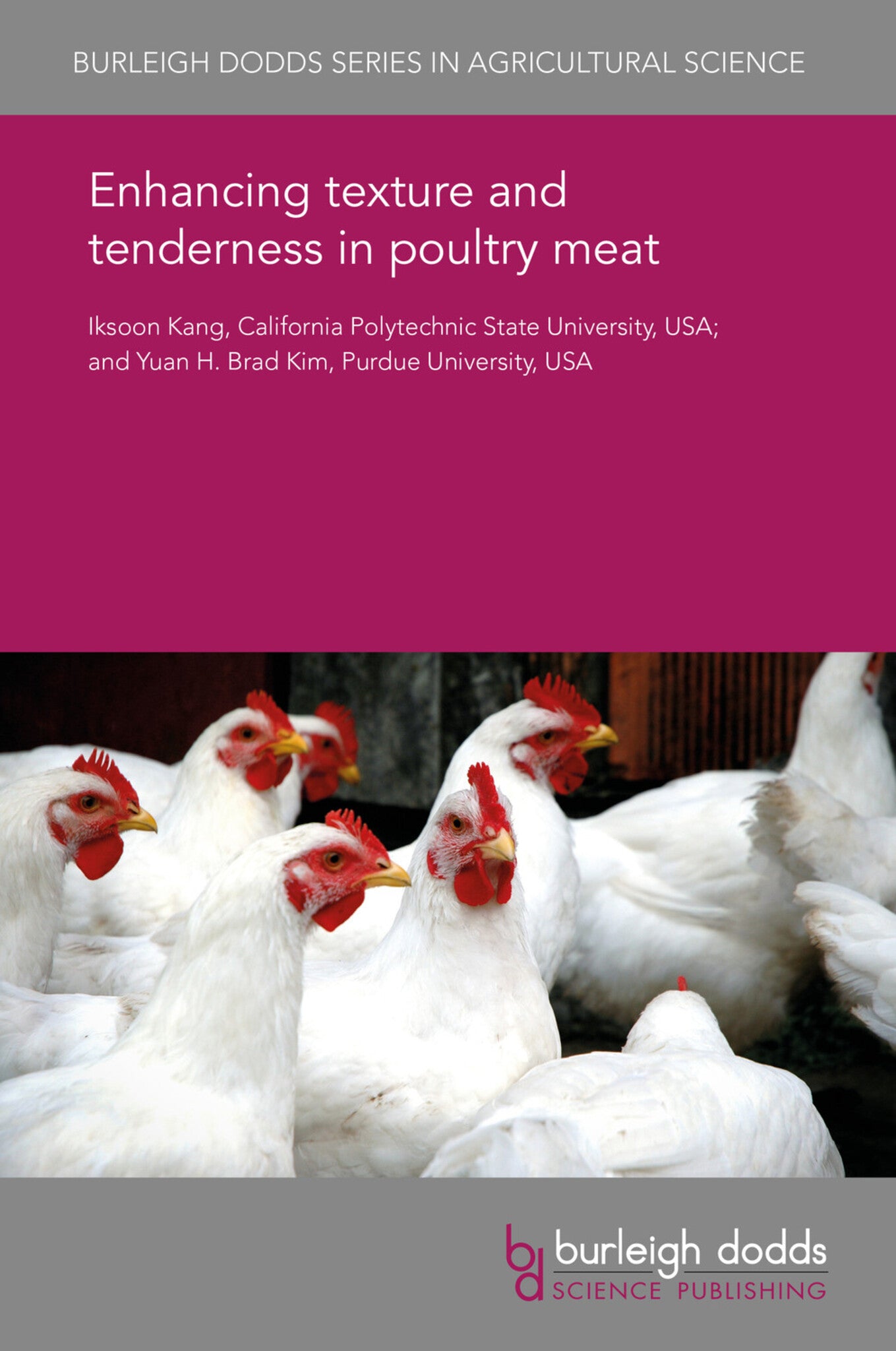We're sorry. An error has occurred
Please cancel or retry.
Enhancing texture and tenderness in poultry meat

Some error occured while loading the Quick View. Please close the Quick View and try reloading the page.
Couldn't load pickup availability
- Format:
-
26 December 2016


TECHNOLOGY & ENGINEERING / Agriculture / Sustainable Agriculture, Poultry farming, TECHNOLOGY & ENGINEERING / Agriculture / Animal Husbandry, Sustainable agriculture

1 Introduction 2 Post-mortem pH decline and rigor development 3 Carcass chilling and muscle tenderness 4 Pale, soft and exudative meat 5 The crust-freeze air-chilling technique 6 Meat tenderness via enzymatic activity 7 Mechanical tenderization 8 Muscle tensioning for improved tenderness 9 Electrical stimulation of poultry carcasses 10 Marination for improved tenderness 11 Conclusions 12 Where to look for further information 13 References



